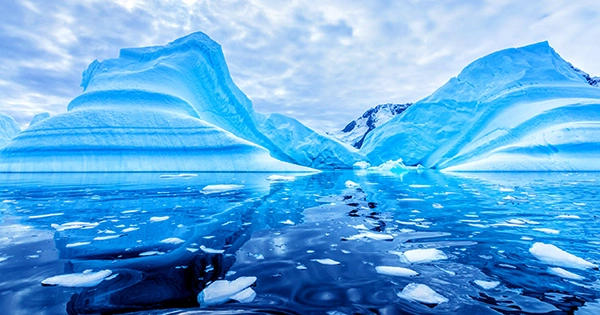Something unusual is occurring to the sea ice in Antarctica. The areal extent of floating ice surrounding the continent is not just at a record low for this time of year — it recently surpassed a record established in 2022 — but it has been at record lows all year.
“What’s happened here is unlike the Arctic sea ice expanse,” says Mark Serreze, climate scientist and director of the National Snow and Ice Data Center in Boulder, Colorado. He predicts a substantial reduction in sea ice at Earth’s other pole (SN: 9/25/19). “Until recently, there hasn’t been much change in Antarctica’s sea ice. But it’s simply dropped.”
The National Snow and Ice Data Center (NSIDC) monitors the spread of sea ice at both poles using daily satellite data. The ring of sea ice surrounding Antarctica has periodically established new record lows throughout much of 2023, remaining significantly below the average extent from 1981 to 2010. On February 21, at the height of the Southern Hemisphere’s summer, the sea ice extent reached an all-time low of 1.79 million square kilometers, the lowest since records began in 1978. That’s 130,000 square kilometers – roughly the size of New York — less than the previous record low, set on February 25, 2022.

Even when the Southern Hemisphere entered winter, Antarctic sea ice remained at historic lows. On June 27, ice-covered approximately 11.7 million square kilometers of water. This is approximately 2.6 million square kilometers less than the 1981-2010 average and around 1.2 million square kilometers less than the previous lowest extent on record for June 27, established in 2022.
Unlike Arctic ice, which is known to be intimately linked to global warming, the causes of changes in Antarctic sea ice extent have been more difficult to decipher. Because of this difficulty, it is unclear whether the changes are the product of natural fluctuation or if “something big has changed,” according to Serreze.
Scientists have paused in recent years (SN: 6/27/17). “We’re kind of falling off a cliff,” Serreze says. He observes that it is unclear whether this year’s magnitude is part of a larger trend. However, “the longer that goes on, the more likely it is that something big is going to happen.”
In terms of geography, the Arctic and Antarctic areas are geographical polar opposites. The Arctic Ocean’s ice is restricted to a relatively small amount of water surrounded by land. The Antarctic, on the other hand, is a landmass surrounded by ocean, therefore sea ice around the continent is considerably more mobile than up north, with a broader seasonal range as it extends in the Southern Hemisphere’s winter and contracts in the summer. Climate simulations have repeatedly indicated that the Arctic will lose more sea ice as the planet warms, at least initially, whereas Antarctica will be slower to respond.
There are several probable explanations for why Antarctic ice has dropped so low this year. Regional climate trends, particularly the Southern Annular Mode, which changes the direction of winds flowing around the continent, can pack or scatter the sea ice cover surrounding Antarctica. Other regional trends, such as the El Nio Southern Oscillation, can also have an impact on ocean and air circulation in the southern high latitudes.
















